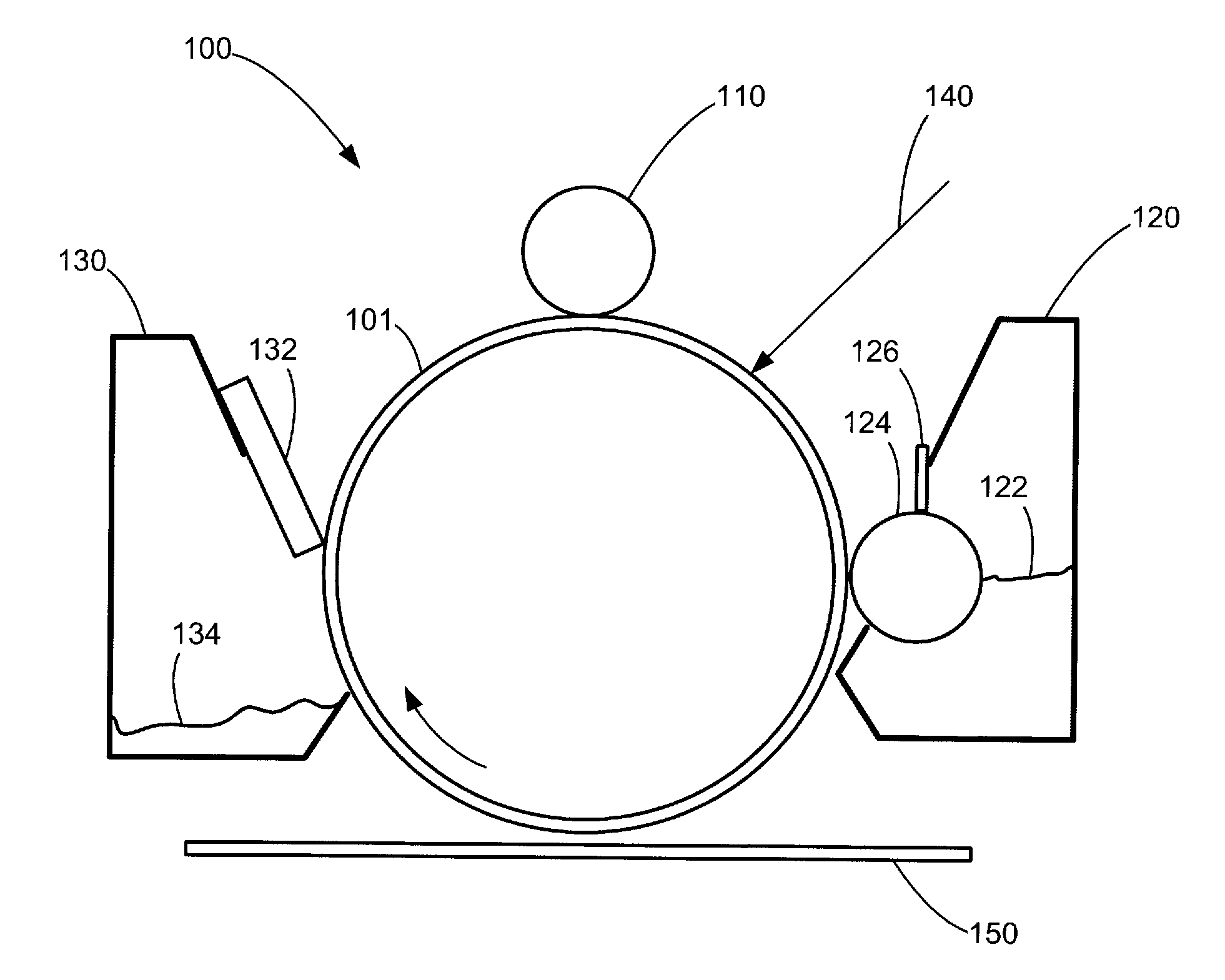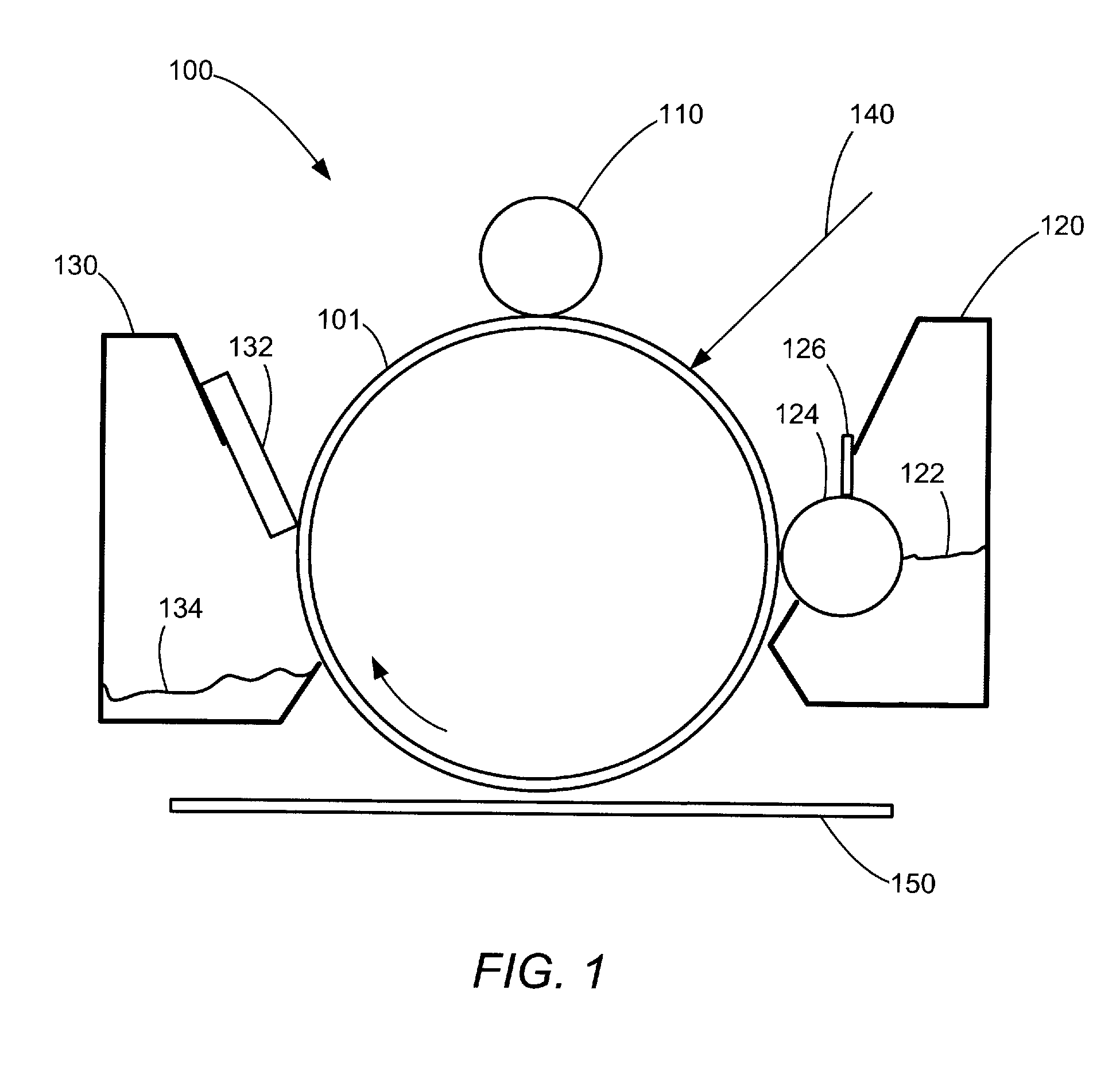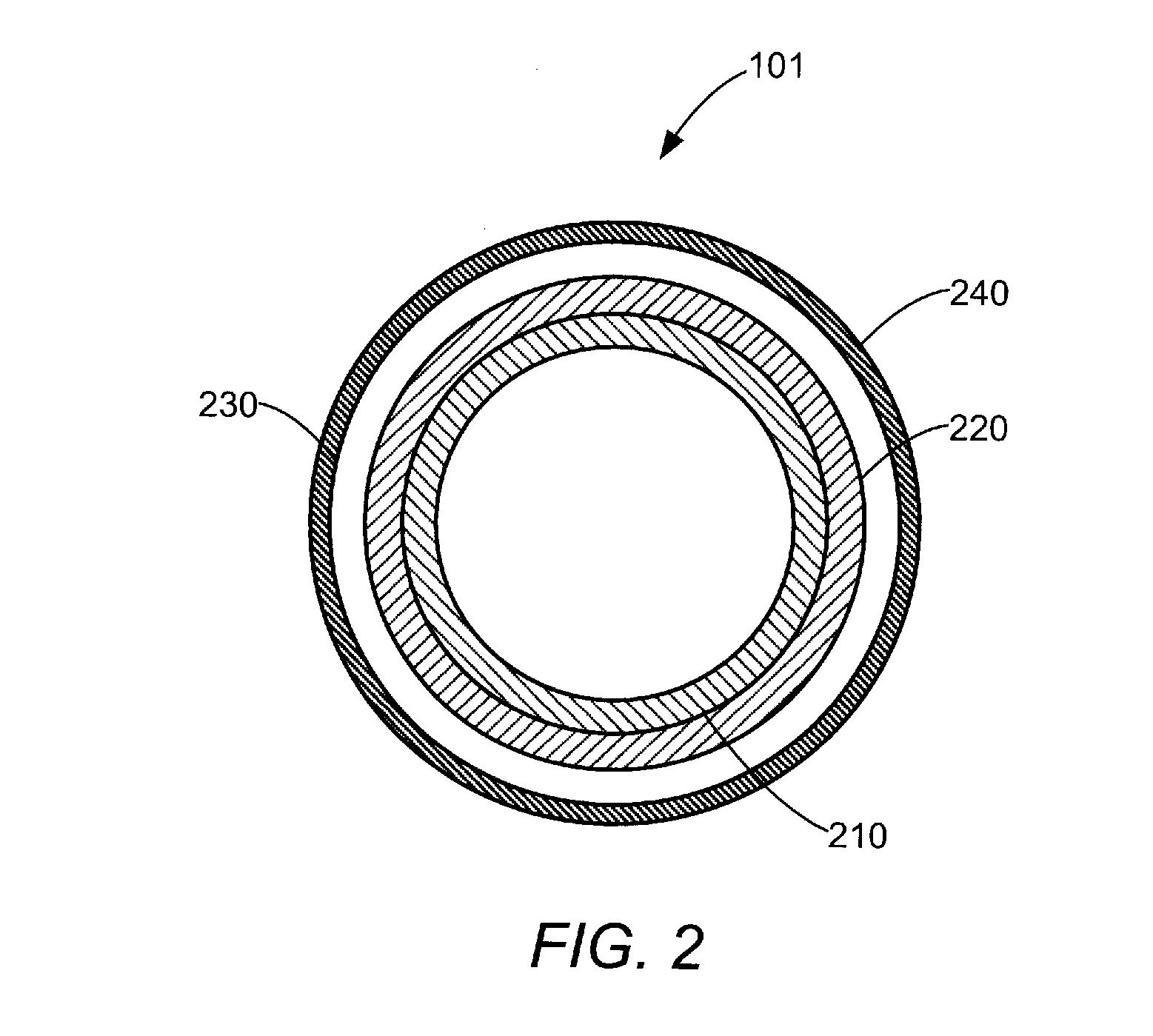Wear resistant urethane hexaacrylate materials for photoconductor overcoats
a photoconductor and overcoat technology, applied in the field of electrographic image forming devices, can solve the problems of mechanical abrasion of the surface layer of the photoconductor drum, scratches and abrasions of the organic photoconductor drum, etc., and achieve the effect of improving wear and abrasion resistance and extending the useful li
- Summary
- Abstract
- Description
- Claims
- Application Information
AI Technical Summary
Benefits of technology
Problems solved by technology
Method used
Image
Examples
example 1
[0036]The charge generation layer was prepared from a dispersion including type IV titanyl phthalocyanine, polyvinylbutyral, poly(methyl-phenyl)siloxane and polyhydroxystyrene at a weight ratio of 45:27.5:24.75:2.75 in a mixture of 2-butanone and cyclohexanone solvents. The polyvinylbutyral is available under the trade name BX-1 by Sekisui Chemical Co., Ltd. The charge generation dispersion was coated onto the aluminum substrate through dip coating and dried at 100° C. for 15 minutes to form the charge generation layer having a thickness of less than 1 μm, specifically a thickness of about 0.2 to about 0.3 μm.
[0037]The charge transport layer was prepared from a formulation including terphenyl diamine derivatives and polycarbonate at a weight ratio of 50:50 in a mixed solvent of THF and 1,4-dioxane. The charge transport formulation was coated on top of the charge generation layer and cured at 120° C. for 1 hour to form the charge transport layer having a thickness of about 26 μm as m...
example 2
[0038]A hexa-functional aromatic urethane acrylate resin is dissolved in a 1:1 mixture of toluene / isopropanol at an amount of about 5% by weight together with 5% by weight of photo initiator. The photo initiator comprises a blend of poly{2-hydroxy-2-methyl-1-[4-(1methylvinyl)phenyl]propan-1-one} and 2-hydroxy-2-methyl-1-phenyl-propan-1-one and is available under the tradename ESACURE KIP® 100 F by Lamberti USA Inc. The obtained curable composition is coated over a control photoconductor prepared as described in Example 1. The overcoated photoconductor drum is then cured in a Rayonet RPR200 reactor at maximum UV emission of around 254 nm for 15 minutes. A target overcoat thickness of 1.0 μm is achieved by either varying the ratio (wt. / wt.) of urethane acrylate to solvent, or changing the coating speed.
example 3
[0039]A hexa-functional aliphatic urethane acrylate resin is dissolved in a 1:1 mixture of tetrahydrofuran / isopropanol at an amount of about 5% by weight together with 5% by weight of photo initiator. The photo initiator comprises 1-hydroxy-cyclohexyl-phenyl-ketone and is available under the trade name IRGACURE® 184 by BASF Corp. The obtained curable composition is coated over a control photoconductor prepared as described in Example 1. The overcoated photoconductor drum is then cured in a Rayonet RPR200 reactor at maximum UV emission of around 254 nm for 20 minutes. A target overcoat thickness of 1.0 μm is achieved by either varying the ratio (wt. / wt.) of urethane acrylate to solvent, or changing the coating speed.
PUM
| Property | Measurement | Unit |
|---|---|---|
| thickness | aaaaa | aaaaa |
| thickness | aaaaa | aaaaa |
| thickness | aaaaa | aaaaa |
Abstract
Description
Claims
Application Information
 Login to View More
Login to View More - R&D
- Intellectual Property
- Life Sciences
- Materials
- Tech Scout
- Unparalleled Data Quality
- Higher Quality Content
- 60% Fewer Hallucinations
Browse by: Latest US Patents, China's latest patents, Technical Efficacy Thesaurus, Application Domain, Technology Topic, Popular Technical Reports.
© 2025 PatSnap. All rights reserved.Legal|Privacy policy|Modern Slavery Act Transparency Statement|Sitemap|About US| Contact US: help@patsnap.com



